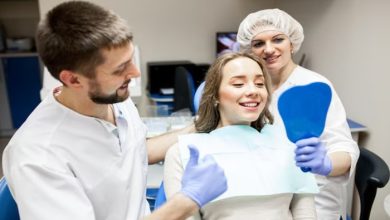
Accurate diagnostics play a pivotal role in both clinical and research settings. The quality and integrity of tissue samples may influence the reliability of diagnostic outcomes. As advances in molecular techniques continue to refine diagnostic precision, the preparation and handling of specimens have become more critical than ever. Following best practices helps maintain consistency, reduce errors, and facilitates more reliable interpretation of pathological and molecular data.
What are FFPE Slides?
FFPE slides are a foundational component in histopathology, offering long-term preservation of tissue morphology and biomolecules. These slides, derived from formalin-fixed, paraffin-embedded tissue, are widely used for immunohistochemistry, molecular profiling, and genetic analysis. The value of these samples is influenced by the effectiveness of the preparation process, from collection to storage. The following practices are essential for maximizing the diagnostic utility of these specimens.
5 Ways to Prepare and Handle Tissue Samples
Following established best practices can enhance the effectiveness of glass slides in diagnostic processes. Proper techniques aid in preserving tissue integrity and contribute to the reliability of results. Here are five practices that may improve the quality of outcomes:
-
Ensure Immediate and Proper Fixation
Delays between excision and fixation can result in autolysis, compromising cellular structure and molecular content. Formalin remains the most widely used fixative, but the key is to immerse the specimen promptly and adequately. Uniform penetration of the fixative ensures that both surface and deeper layers are equally preserved, which is vital for downstream analysis. Proper fixation plays a role in maintaining antigenicity, which is important for immunohistochemical studies.
-
Standardize Processing Protocols
Consistency in processing protocols eliminates variability that could affect slide interpretation. Automated tissue processors have enhanced standardization, but attention to factors such as solvent purity, timing, and temperature remains essential. The paraffin used for embedding should be free of contaminants and maintained at the correct temperature to avoid damaging the tissue. Orientation during embedding is another important detail, as it determines the quality and usability of the sections prepared later.
-
Maintain Precision During Sectioning and Mounting
Microtomy involves cutting thin tissue sections with precision, where blade quality, section thickness, and technique all impact the outcome. Sections should be between 3 to 5 microns thick, and careful mounting is essential to avoid distortions. Proper labeling and documentation ensure sample integrity and traceability throughout the process.
-
Optimize Storage Conditions
Both prepared slides and tissue blocks require optimal storage to preserve their diagnostic value. FFPE blocks should be stored in a controlled environment with low humidity and stable temperatures to prevent degradation. Similarly, slides should be kept in dust-free, low-light conditions to avoid fading or contamination. Archiving samples under regulated conditions extends their usability for retrospective studies or reanalysis. Tracking systems for inventory management can also support long-term sample viability and accessibility.
-
Implement Quality Control Measures
Quality assurance involves regular checks at each stage of sample preparation. Verifying fixative composition and consistent staining help maintain high standards. Digital tools and training for lab personnel reduce errors, while documentation ensures compliance and reliability.
How a Biospecimen Provider Supports Research Efforts
A biospecimen provider of FFPE (formalin-fixed, paraffin-embedded) human tissue samples helps researchers globally. Such a research lab aims to address a gap in the availability of top-tier tissue samples to support medical and scientific advancements. In addition to supplying high-quality biospecimens, a specimen provider plays a critical role in helping researchers by ensuring that tissue samples meet stringent quality control standards.
Safeguarding the diagnostic accuracy of tissue specimens requires careful handling and preparation protocols. The proper use of FFPE slides depends on these best practices, as deviations may affect diagnostic clarity. As the field of pathology continues to evolve, maintaining robust sample preparation workflows remains central to reliable and reproducible outcomes.



